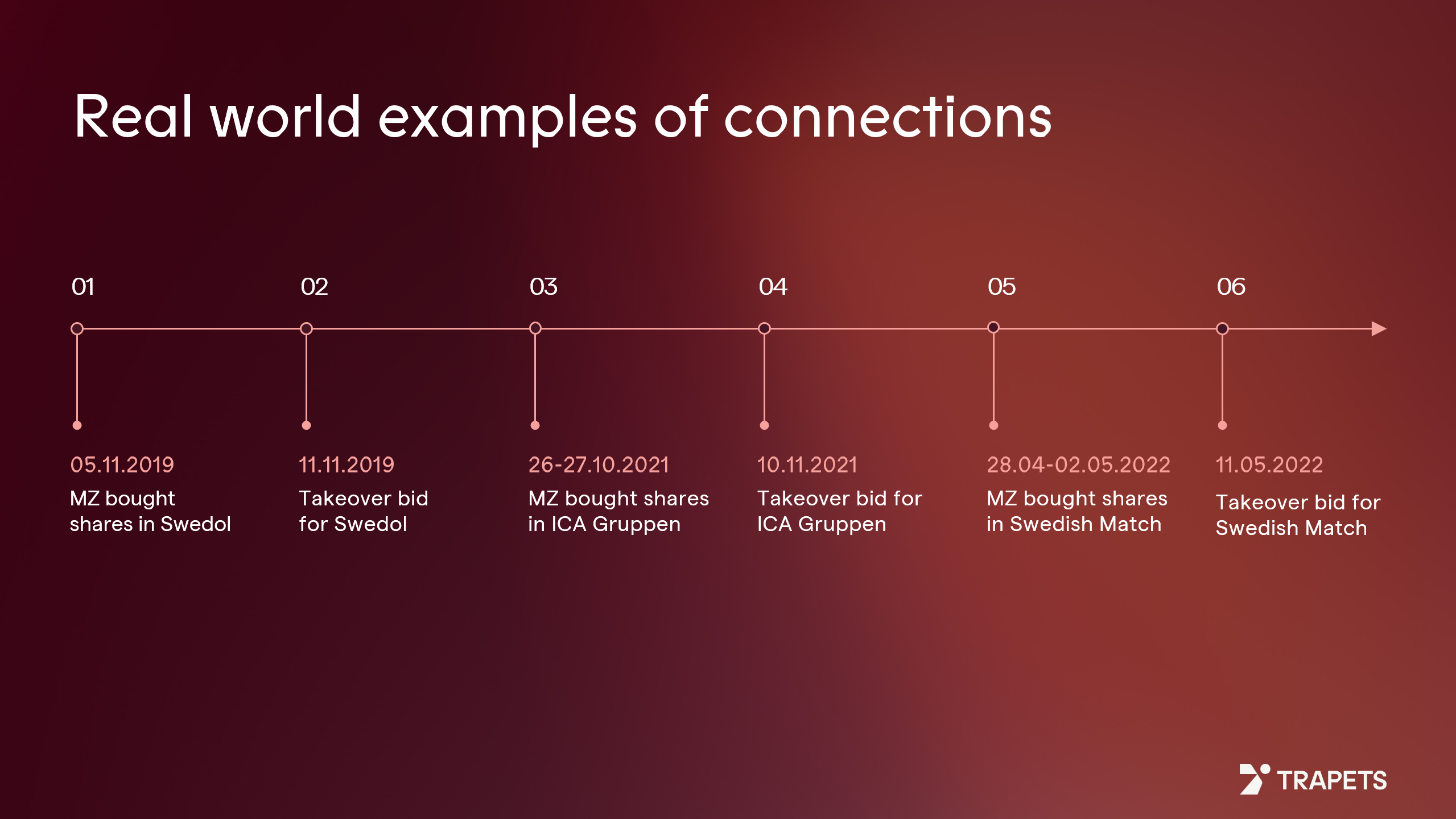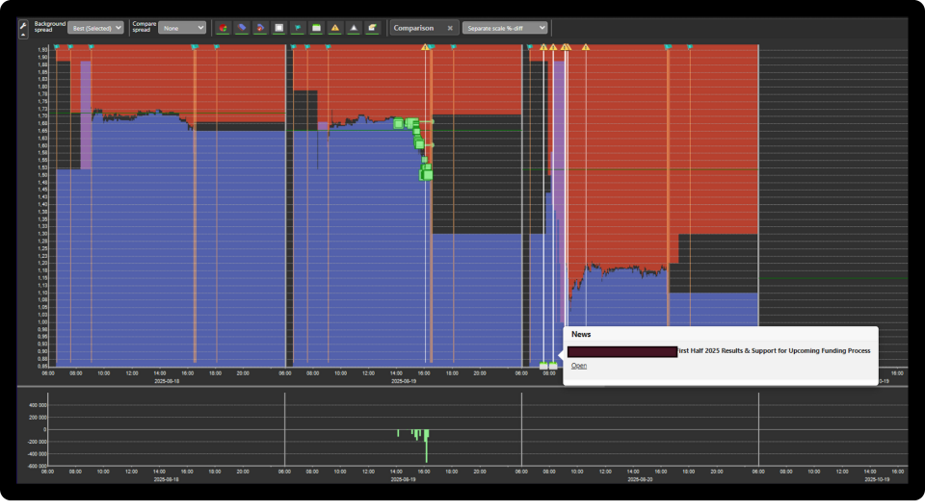
Insider trading: detection, prevention, and compliance framework
This article explains insider trading, its legal implications, and best practices for companies to protect their business.
Learn how to effectively identify insider trading and best compliance practices from our expert's examples of real cases.

Insider trading is a complex form of financial crime. It can be difficult to detect, harder to prove, and highly damaging to market integrity.
For both regulators and firms, each case highlights the same challenge: how to differentiate legitimate trading from activity driven by inside information.
In this article, Per Friberg, Senior Financial Crime Surveillance Officer at Trapets, shares insights from his experience working with over 1,000 insider trading cases, highlighting recurring patterns, real-world examples, and practical detection techniques.
Before we get started with real cases and detection techniques, let’s get back to basics to understand what constitutes insider trading under the law.
Insider trading occurs when a person possessing inside information uses it to acquire or dispose of financial instruments to which that information relates. This can involve:
Insider trading is regulated under the Market Abuse Regulation (MAR) introduced in 2016 in the EU and 2020 in the UK, with only minor differences following Brexit.
To qualify as inside information, all three of the following conditions must be met:
Insider trading can take many forms, but most cases follow a recognisable pattern. Information leaks from those with inside information and reaches individuals who act before the information becomes public. The trades are often profitable, well-timed, and difficult to explain through normal market behaviour.
In October 2021, a store manager at ICA Maxi sold holdings in fixed-income funds worth approximately SEK 25 million and used the proceeds to purchase ICA Gruppen shares.
Just a few weeks later, in November, a takeover bid for ICA Gruppen was publicly announced.
Subsequent investigation revealed a close connection between the trader and another ICA Maxi store manager, who was classified as an insider within the company.
This case highlights a common pattern: the use of personal or professional relationships to access non-public information.
The red flag in this example represents that the store manager sold off a large holding in zero-risk fixed-income holdings to buy one stock, not even spreading the risk.
For surveillance officers, identifying links between traders and insiders, even those outside the core corporate circle, is necessary in uncovering such activity.
Another notable case involved a trader, referred to as MZ, who executed a series of profitable trades across several companies in quick succession:

The red flag in this example is that we see too many timely trades ahead of takeover bids, which can’t be simply associated with luck.
Investigators later discovered that MZ was a childhood friend of a surveillance analyst at the marketplace where these shares were trading, someone with access to inside information for all three deals. The consistent pattern and timing made the trades difficult to justify as coincidence.
This case shows the importance of cross-case analysis and relationship mapping, which helps to identify repeated suspicious trading connected to the same social or professional network.
Insider trading detection often starts with a pattern. Using Trapets Market and Trade Surveillance, compliance teams can visualise and analyse those patterns to uncover potential misuse of inside information.
The first example that you see in the graph below is an example of trading ahead of scheduled news. In this case, the system detected aggressive selling activity shortly before a company’s earnings report was published.

As Per Friberg notes:
“The typical insider is often quite eager to buy or sell ahead of the news. Aggressive trading behaviour is common.”
The trades, visualised as green dots in the surveillance graph, showed a clear sell-off immediately prior to the announcement, a signal that drew attention due to its size and timing. The absence of any public information that could justify the move strengthened the suspicion of insider involvement.
The next example is linked to an unexpected takeover announcement.

On 13 July, an account began buying aggressively, pushing the price from 2.70 to 3.00. There was no public information or news to explain this sudden price movement.
Eleven days later, on 24 July, a public takeover offer for the same company was announced. The closing price before the news was 2.35, while the offer price stood at 3.53, a premium of nearly 50%.
Immediately after the announcement, the account sold off its holdings at around 3.40, securing a significant profit.

Based on experience from over a thousand investigations, Per shared some core practices for detecting insider trading more effectively:
“Insider trading undermines market integrity and exposes firms to severe legal and reputational consequences. By combining proactive monitoring, strong access controls, and advanced detection technology, you can turn compliance from a defensive function into a strategic safeguard,” summarised Per Friberg in a previous webinar.
For surveillance professionals, each suspicious trade is an opportunity to detect wrongdoing and strengthen trust in the market.
Curious how you can use technology to spot insider trading? Watch the webinar where Per shares methods on how to identify insider trading, or contact us to discover how Trapets Market and Trade Surveillance can help you enhance your market monitoring efforts.

Per has a background in investment banking and has extensive experience as a sales trader of European and US equities and derivatives. He has worked as a criminal investigator of market abuse at the Swedish Economic Crime Authority and at the National Anti-Corruption Unit at NOA within the Swedish Police Authority.
Sign up to our newsletter to receive the latest news within the financial crime industry and to receive invitations to our webinars.